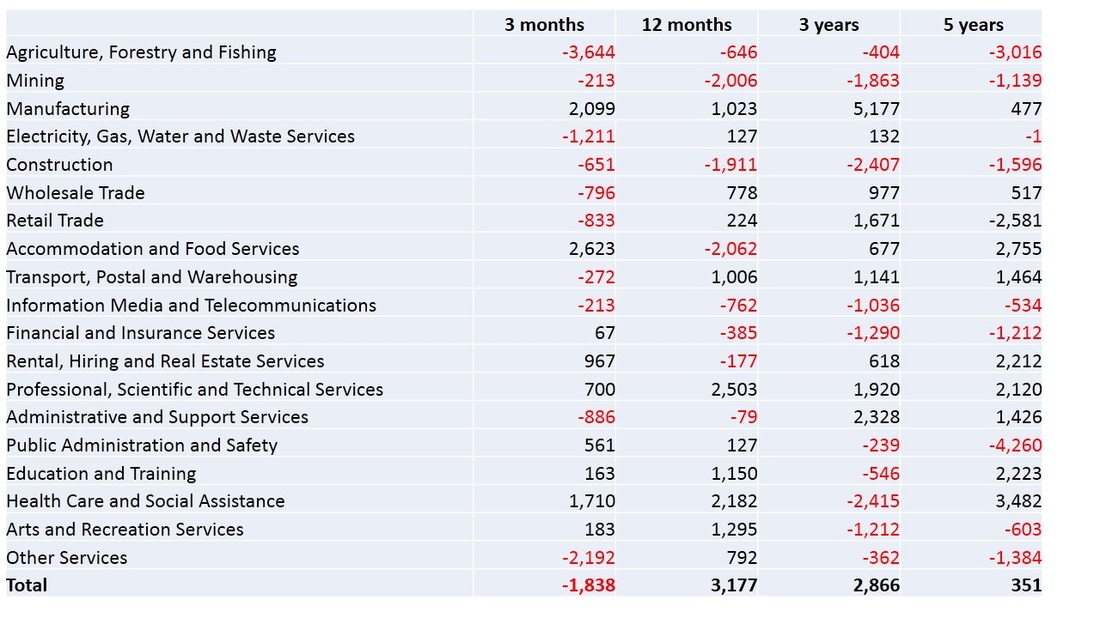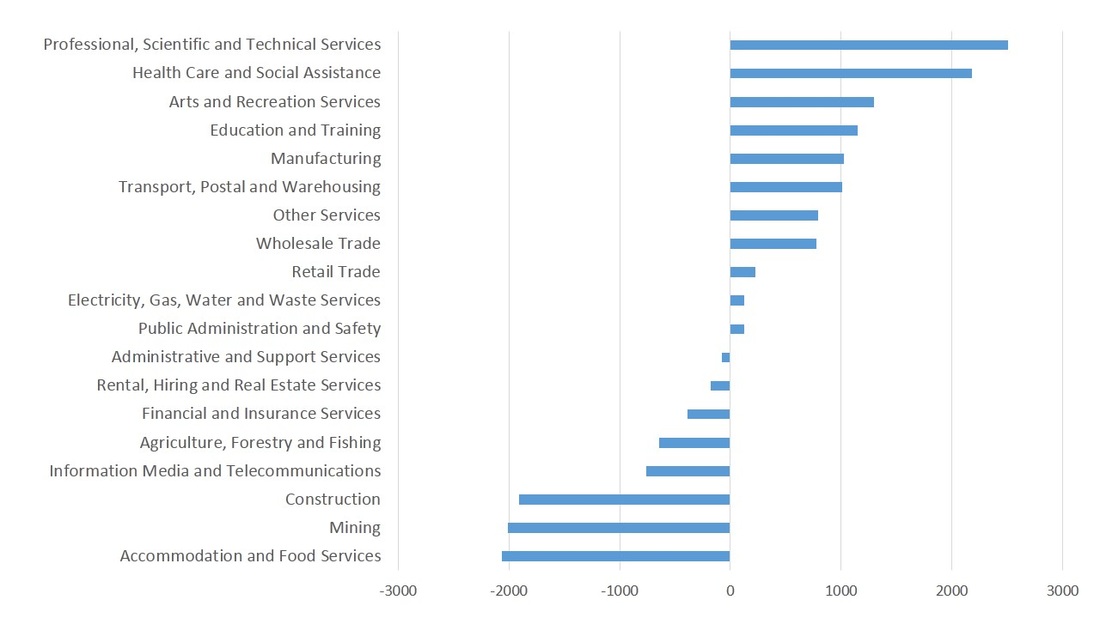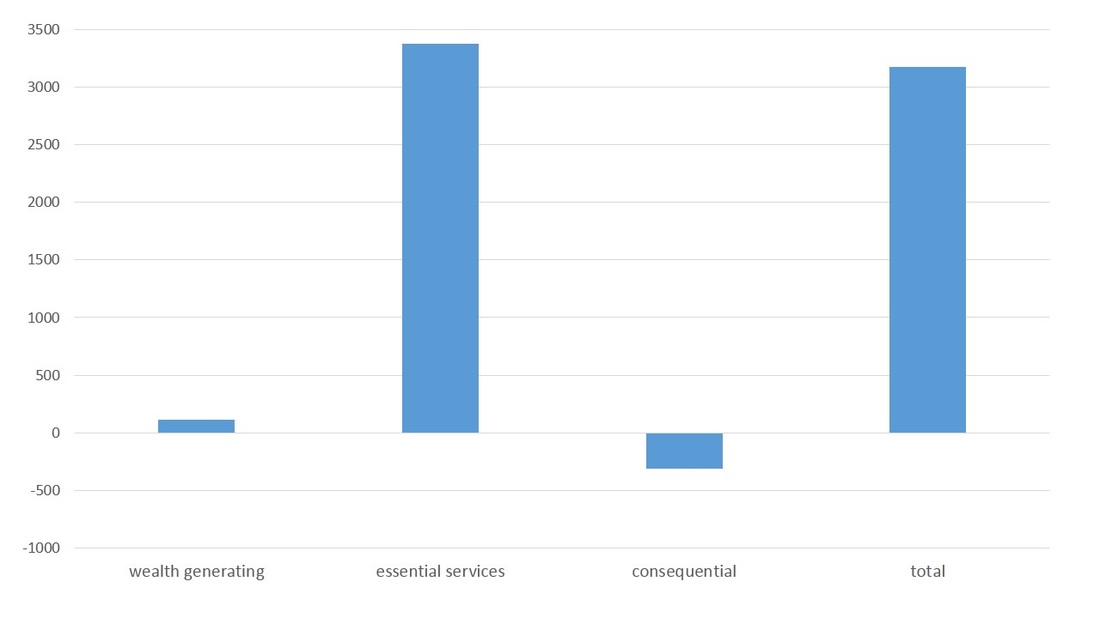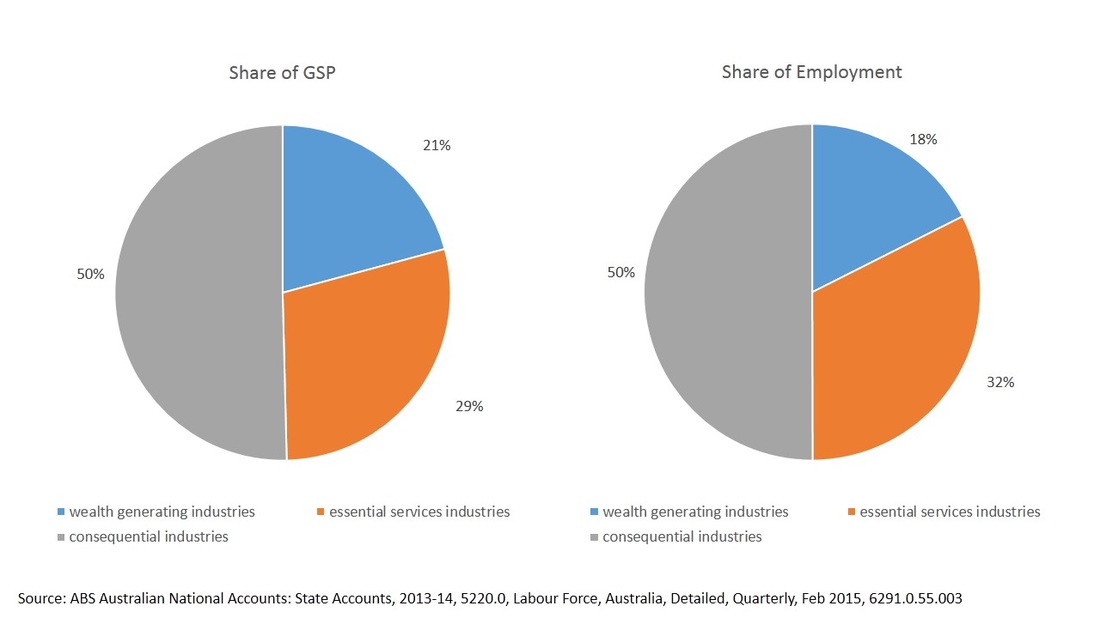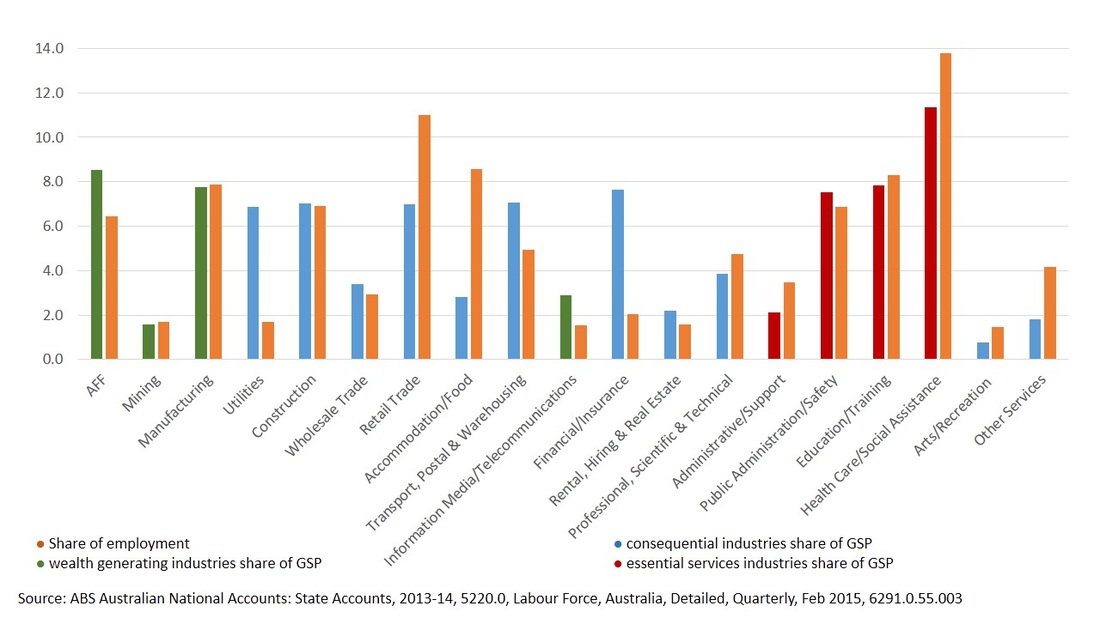The changes over the past 3 months, 12 months, 3 years and 5 years demonstrate the volatility of the Tasmanian employment market and the impact of factors such as economic conditions (locally and globally) and policy intervention. The table below shows the difference in the number of people employed in each industry sector in May 2015 compared with the previous period in each column.
Since May 2014, the greatest employment gain has been in the Professional, Scientific and Technical Services industry sector which encompasses architectural, engineering, legal, accounting, advertising, market research, management, consulting, veterinarian and computer design services. The greatest employment loss has been in the Accommodation and Food Services sector. The below table shows the change in employment for each industry sector compared with May 2014.
